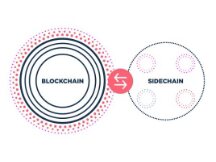Arbitrum: What is the future of blockchain scaling?
Historically, Ethereum oil prices have reached astronomical highs on three occasions: bull market 2017, summer DeFi 2020 and summer NFT 2021. As the image below:

Above: Oil prices rise on the Ethereum network from 2015 to November 2021.
As fuel prices continue to rise, talks about strengthening the Ethereum blockchain will resume as more and more people seek a competitive blockchain network continue. In fact, the high cost of gasoline is just the tip of the iceberg that we face. The reason the current price of gas is high is because Ethereum cannot be measured.
Understanding the Scalability Arguments
Blockchain is designed with a design that avoids the problem of double spending by trading in a single distribution and locking them in blocks, and trusting trusted organizations. Early blockchain networks such as Bitcoin and Ethereum completed and implemented these exchanges based on an agreed Operating System (PoW) model.
In the PoW model, at the start of the activity, it was placed in the activity pool waiting to be completed and disseminated to all parts of the network. Distributed to all nodes, but only one node completes the compilation problem, adds this change to the block with other industries, and receives the exchange rates based on the soul of the product.
First of all, it will take a long time to become a business because it has to be advertised on the network before and after its recognition. Second, the calculator needed to solve a math problem uses a lot of energy. Finally, each block has a limited space for how much it can hold. This creates competition among consumers, raises fuel prices and sometimes exceeds the cost of trade.

Scan QR code with WeChat































